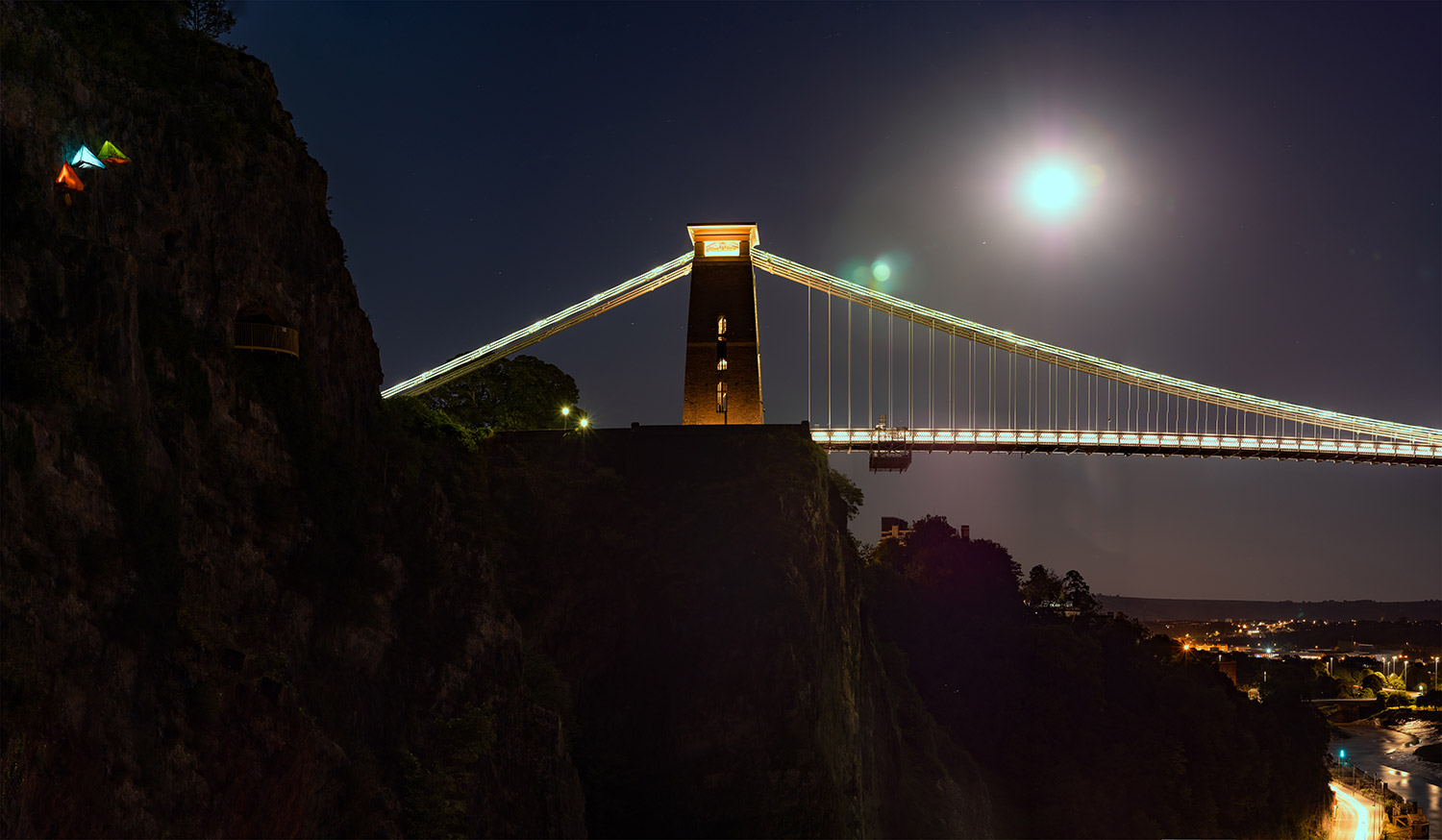Photo credits: Zak Bentley
On June 30th 2018 Phoebe Smith (Extreme Sleeper and Author), Ollie Laker (IRATA level 3 qualified rope access and rigging specialist who has worked with the BBC on Planet Earth 2 and more) and John Pike (rope specialist and award-winning A&E and Air Ambulance doctor who set up the UK’s first canopy training courses for forest researchers and film-makers) undertook a challenge to sleep dangling from 10 vertigo-inducing wonders – from the natural to the man made, going north to south along the length of Britain and ending up sleeping on the side of the Spinnaker Tower for Wild Night Out 2018. In doing so they raised £20,760 for Centrepoint. Here Phoebe recounts what she learnt sleeping over 100m in the air for Wild Night Out…
I can’t sleep. It’s not my mattress – being memory foam it has perfectly contoured to my body shape, suiting me perfectly. It’s not my pillow – offering the ideal combination of soft yet firm support, I feel comforted. And it’s not my duvet, stuffed full with hypoallergenic down; its baffles engulf me with their warmth, hugging me securely as though I’m being embraced by an old friend. So I can only blame it on my mind – for that’s the only part of me not at rest.
In fact it’s racing – filled with worries and concerns about the emails I have not yet answered, the projects I need to finish, the people I need to call, the meetings I have to arrange, the deadlines I have to meet.
It’s by no means a rare problem, I’m one of many thousands of us who find it impossible to switch off and find a way to drift off to sleep at night. But, just a few days later, I find myself in the deepest sleep imaginable. This time there is no perfect mattress, no fluffy pillow and no duvet to wrap myself in. Instead I’m dangling 100m above a sheer drop, peering down into the darkened abyss while a waterfall trickles into the deep chasm below. My pillow is a flocked inflatable number; my mattress is a thin piece of netting suspended between two rocks, and my blanket is a double layer of sleeping bags for extra warmth.
This combination may not seem conducive to a good night’s sleep, yet I am finding it to be the perfect antidote to a racing mind. It is night four of 10 in a self-devised charity challenge in which I have chosen – voluntarily – to suspend myself off 10 UK landmarks on consecutive nights.
So far I have slept dangling over sea cliffs in the north of Scotland, hanging off a mushroom-like rock formation they call the Bunnet Stane (aka Bonnet Stone), suspended from a football stadium in Sunderland and now I am lying above the highest cave entrance in the Yorkshire Dales, above a huge drop known as Gaping Gill. It won’t end here. Ahead of me will be nights hanging off Bradford’s Alhambra Theatre, dozing in front of a stained glass window in a converted church in Manchester, kipping from the highest tree branches in Wales, abseiling down the Avon Gorge in Bristol to sleep among its rare flora, suspended from a skyscraper in central London and a finale for Wild Night Out at Portsmouth’s Spinnaker Tower.
Every night starts the same, with a long drive with my teammates to the next chosen location. Once there a lot of thought must go into how best to pitch and secure ropes and make my bed for the night secure. Then comes the rigging. It’s a process that can take hours. While it’s being worked out food must be made, a basecamp established and gear found and laid out. And still the hard work is not yet finished. Because the actual act of getting into bed takes a certain amount of skill.
Any sleepiness felt at first soon dissipates when you are faced with a huge drop over which you much overhang and lower yourself down in order to reach your bed. Held tight by the hug of a full body harness, that I’m so used to wearing it is like my own version of pyjamas, my night cap is a helmet and my slippers climbing shoes as I clip a whole series of karabiners and back up devices into the ropes before I begin to lower myself into thin air.
When I finally reach my platform – be it a portaledge or similar I need to make myself secure. It’s a process that must also be done methodically with much thought given to it – nothing can be rushed. I can’t simply clip into the safety ropes and rest, instead one by one I have to move my climbing paraphernalia over from one carabiner to another so that I am secure ready for bed.
Usually I’m someone who sleeps on my stomach, so in doing this I have had to adapt to sleeping on my back and in a harness – as it can’t come off until I am back on solid ground. I feel its tight grip around my waist and over my shoulders as I lay down. At first it is restrictive, but I have soon learned to like its grip, it is rather than uncomfortable, comforting, as it will keep me safe from harm.
With great drops of nothingness beneath me, fresh air moving all around me, and the sight of many hundreds of metres tumbling away beneath where I lie, you’d think I’d be concerned. But rather than a busy mind, the process by which I must undertake to make myself safe has left me relaxed and focused only on the primal need to find myself somewhere safe to sleep. All the other thoughts – of emails, deadlines, social media updates and other modern day distractions suddenly seem like just that – mindless diversions that have finally found their true place in my priority list.
It may seen like a very extreme way to learn one of life’s very important lessons, but this isn’t just a macho gung ho adventure for the sake of it. I’m doing this challenge – my Extreme Sleep Out – to raise money and awareness for Centrepoint, the young people’s homeless charity and to encourage others to participate in Wild Night Out. My thinking is that what I’m doing looks dangerous but, thanks to two teammates with vast experience of rigging ropes and portaledges – the bed-like contraptions that Big Wall climbers use to hang off sheer rock faces when attempting committing multi-pitch routes – is actually as safe as can be. Yet all across the UK, young people are being forced to sleep in very risky situations through no fault of their own. If my spending 10 nights in uncomfortable sleeping situations means that just one less person doesn’t have to sleep somewhere treacherous anymore then it all has been worth it. And that thought alone makes me sleep sounder than I ever have before.
You don't have to go as far - or as high - as Phoebe did for Wild Night Out this year. You could camp in your garden, wild camp or join one of the organised camp-outs with the YHA (link) to clear your mind, spend time with likeminded others and enjoy nature.
You can find out more about Phoebe Smith’s adventures here. You can also support her next #WeTwo expedition here. Through #WeTwo, Phoebe will attempt to reach the South Pole in a plight to empower underprivileged young people through adventure.
#WildNightOut2019
WILD NIGHT OUT: GET INVOLVED
There are so many ways you can go wild at night. Anyone and everyone can take this opportunity to make some amazing memories to treasure forever. To get your imagination going, we’ve gathered together some ideas, stories, and how-to guides to help you design the very best Wild Night Out for you.
Everyone needs a Wild Night Out!










